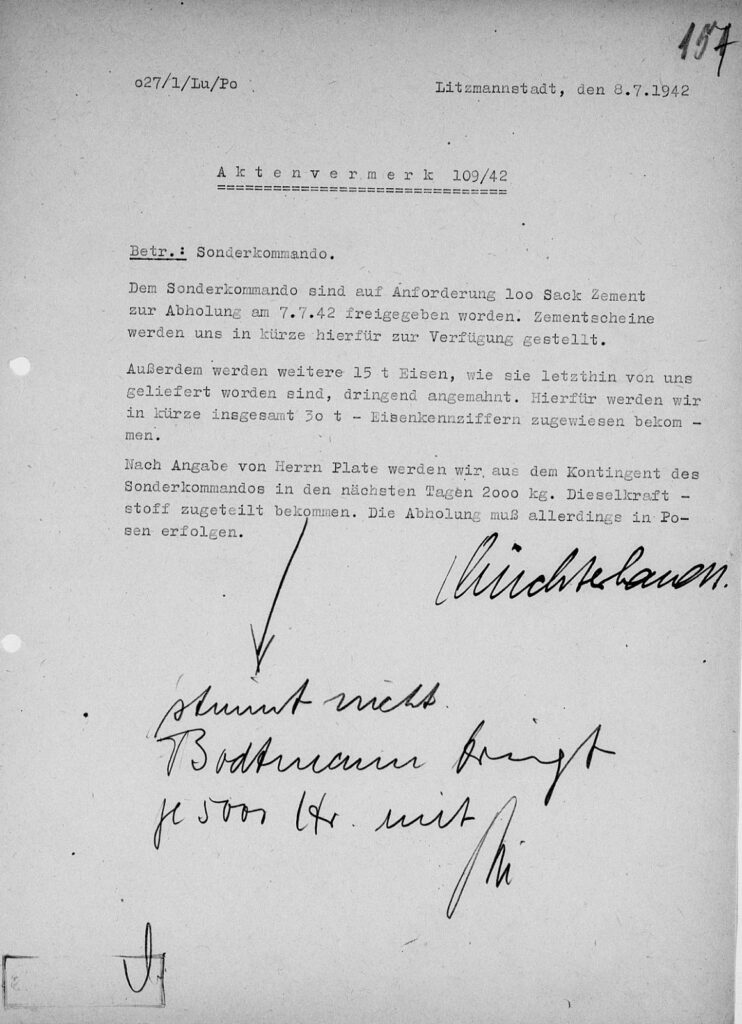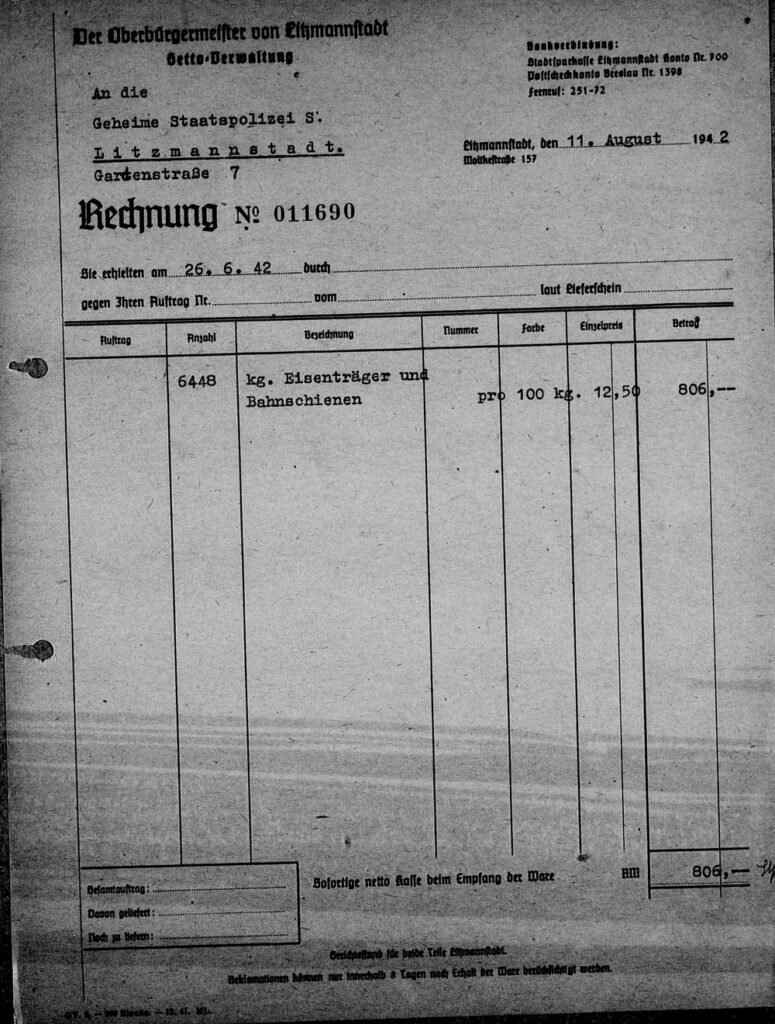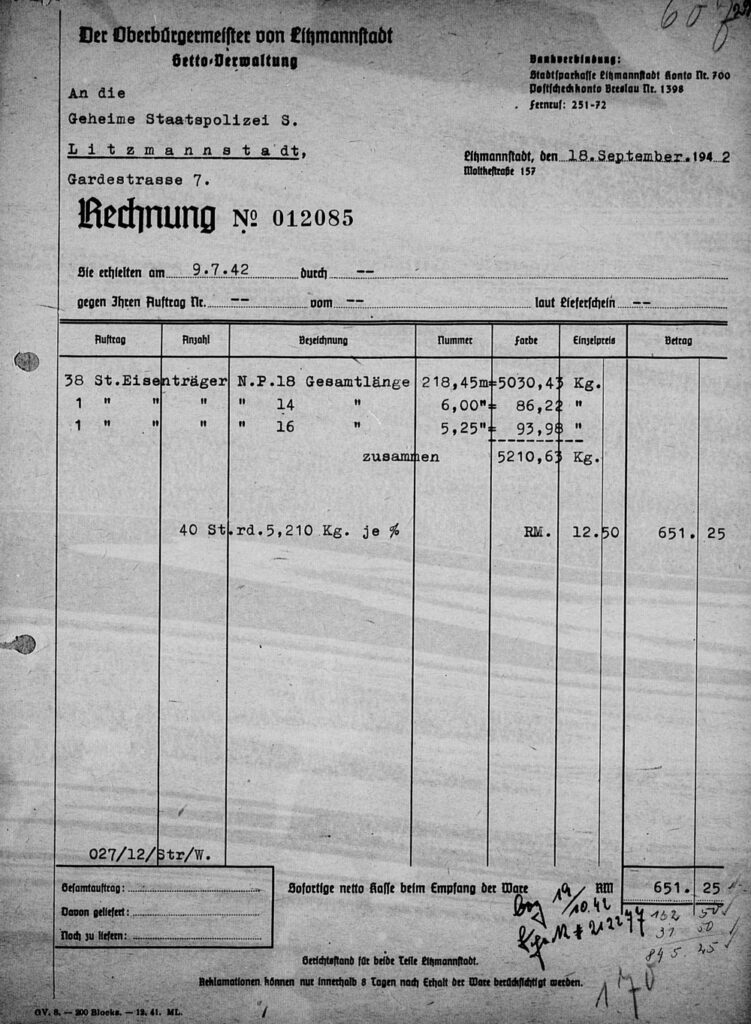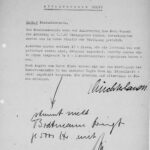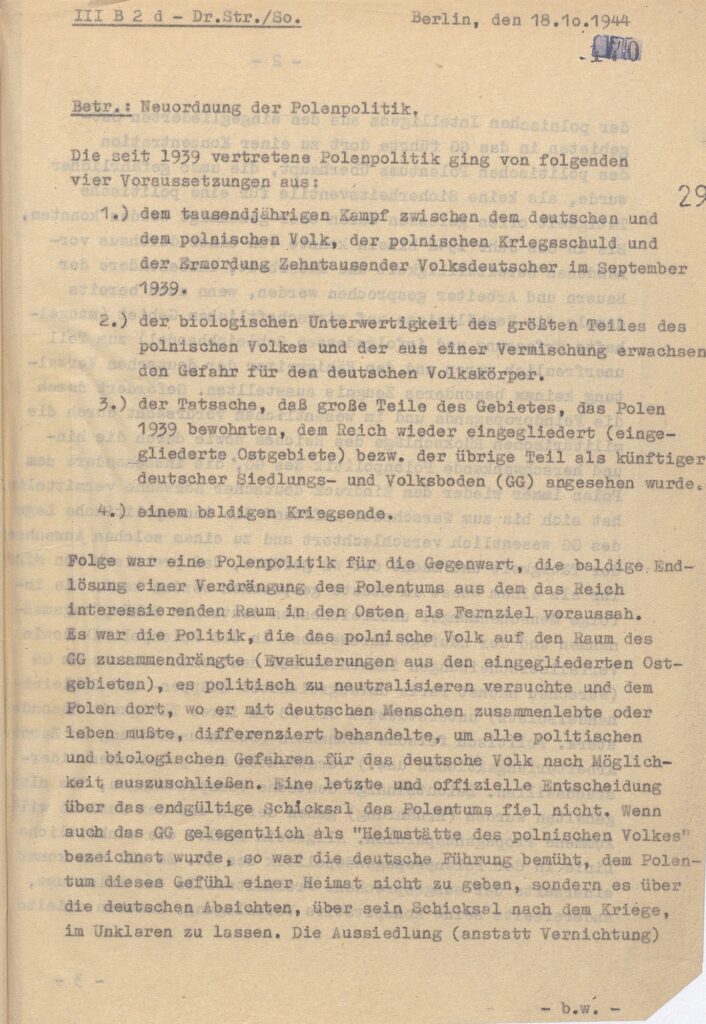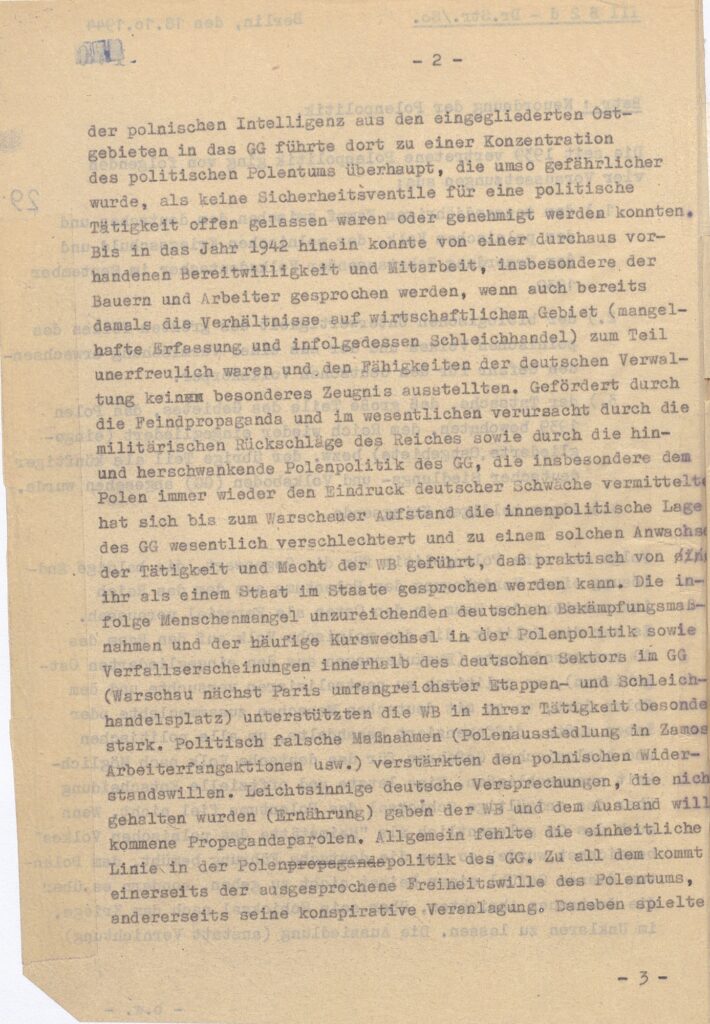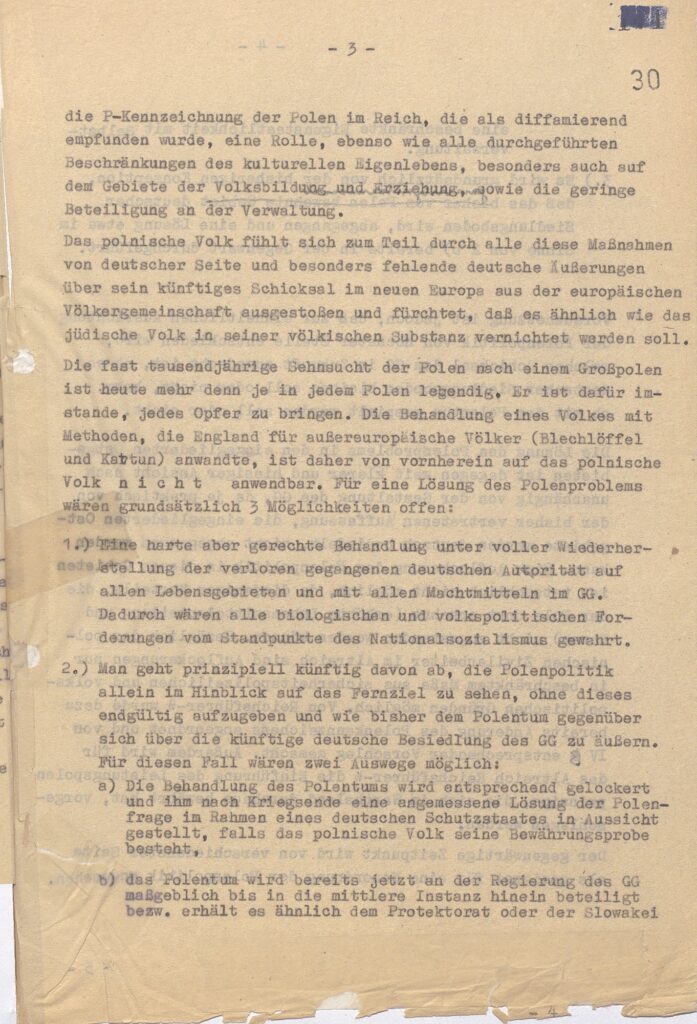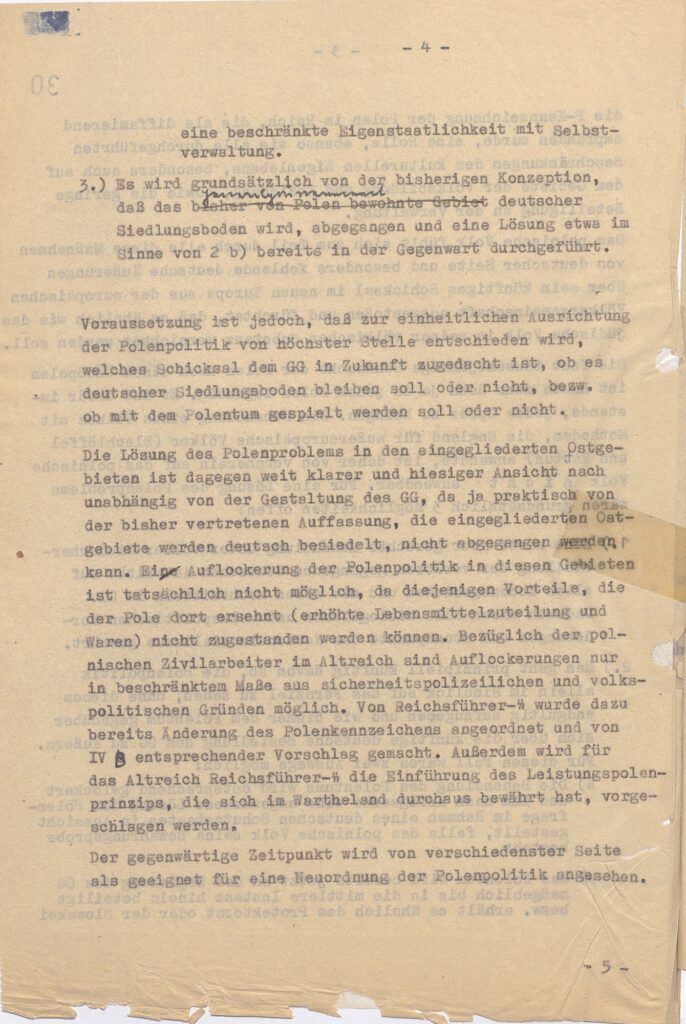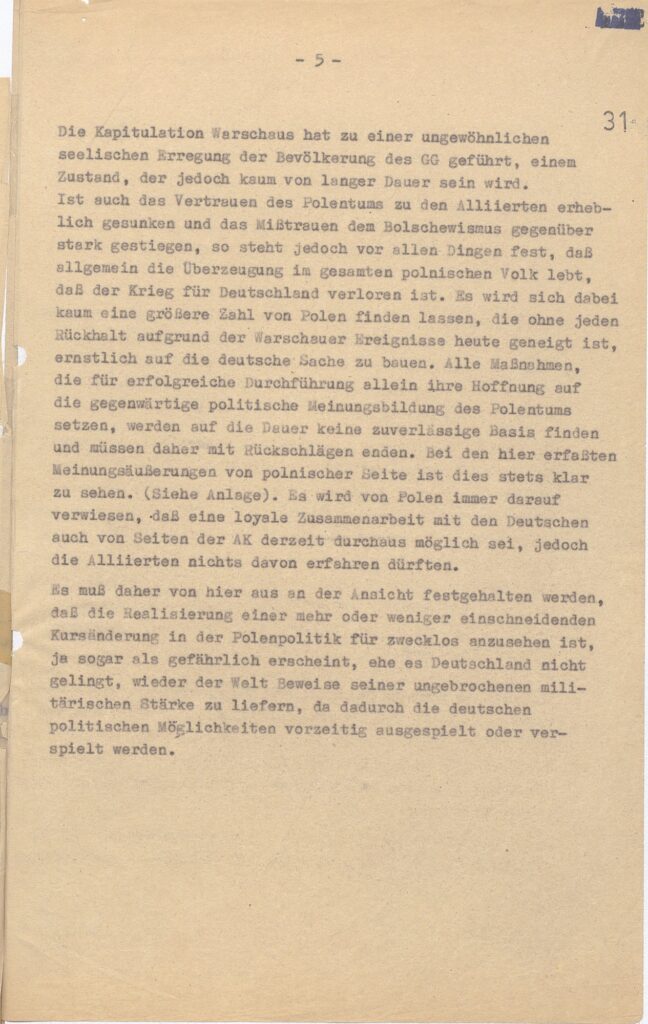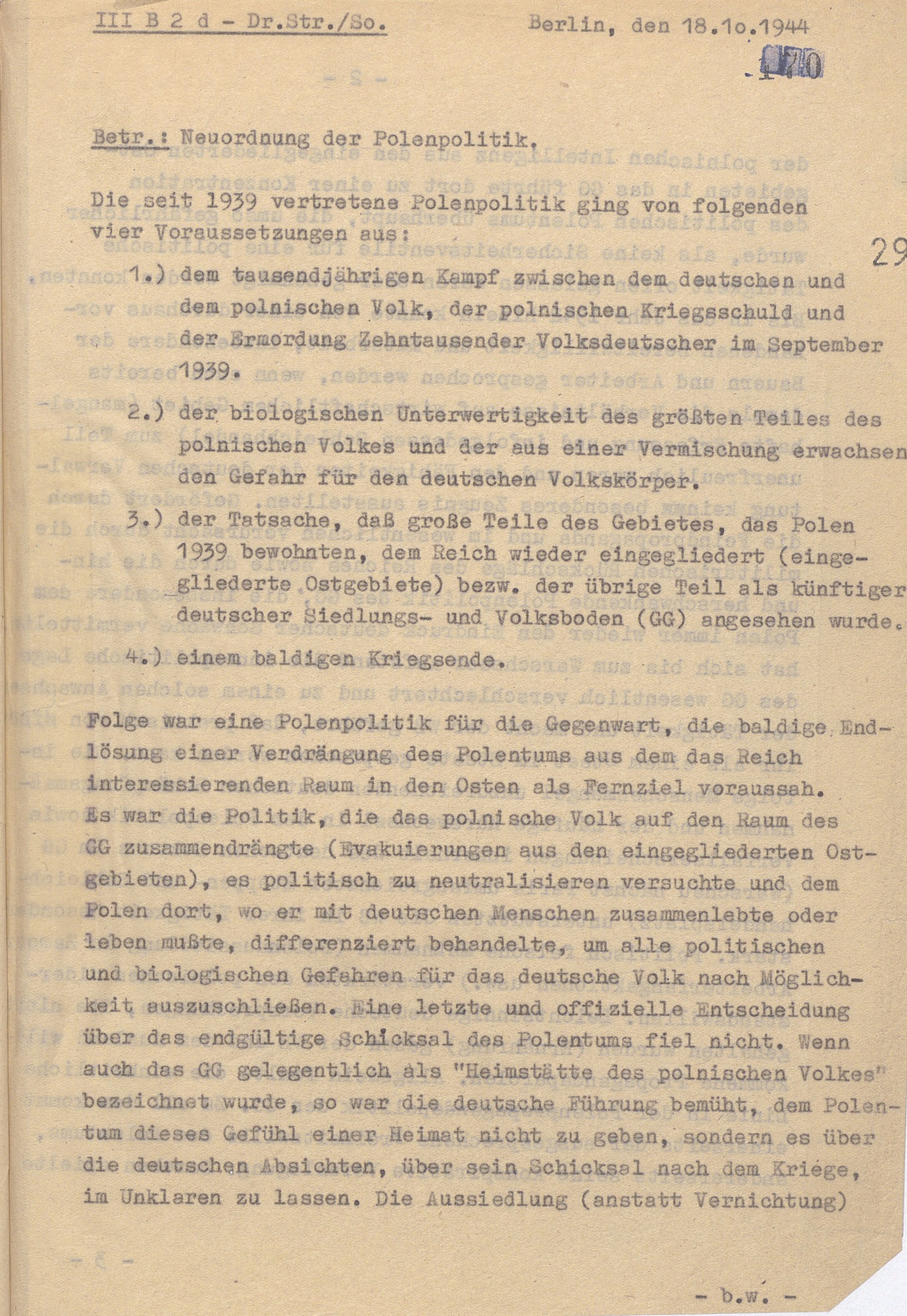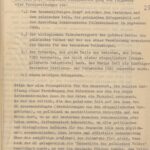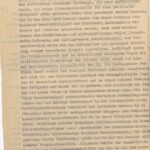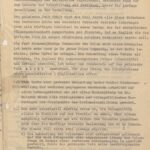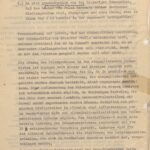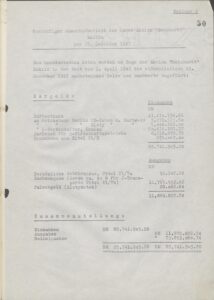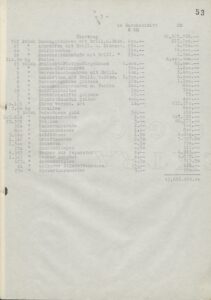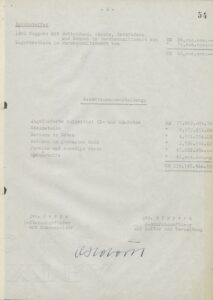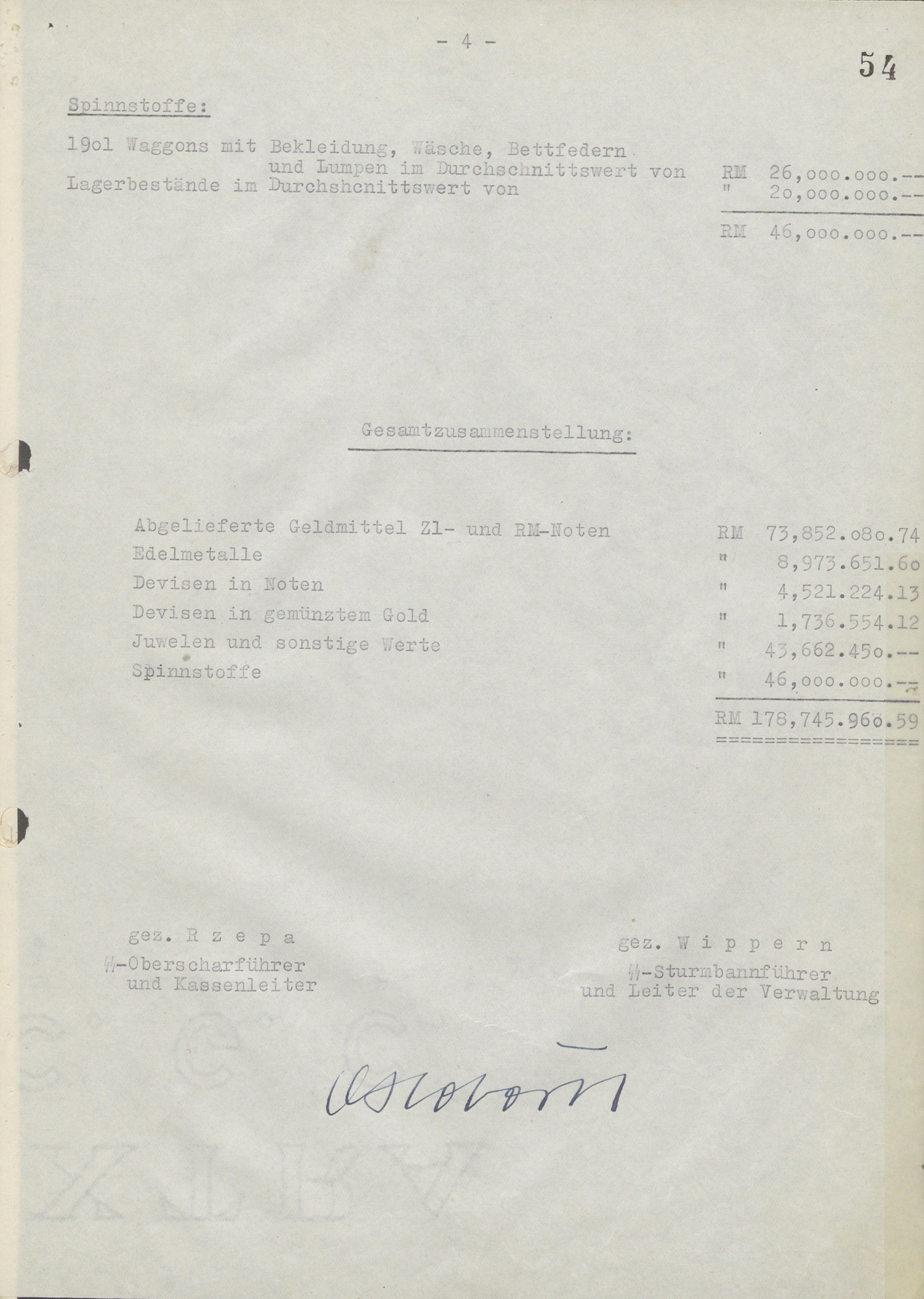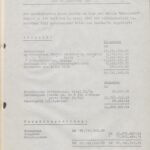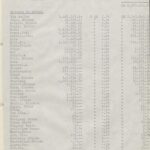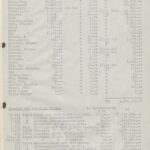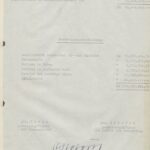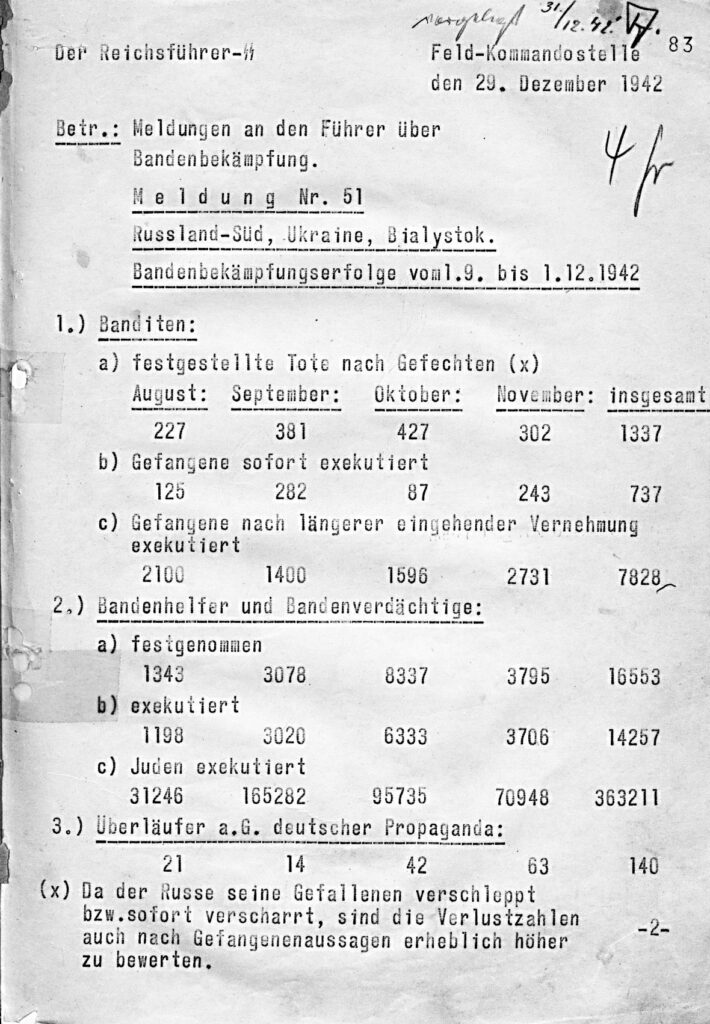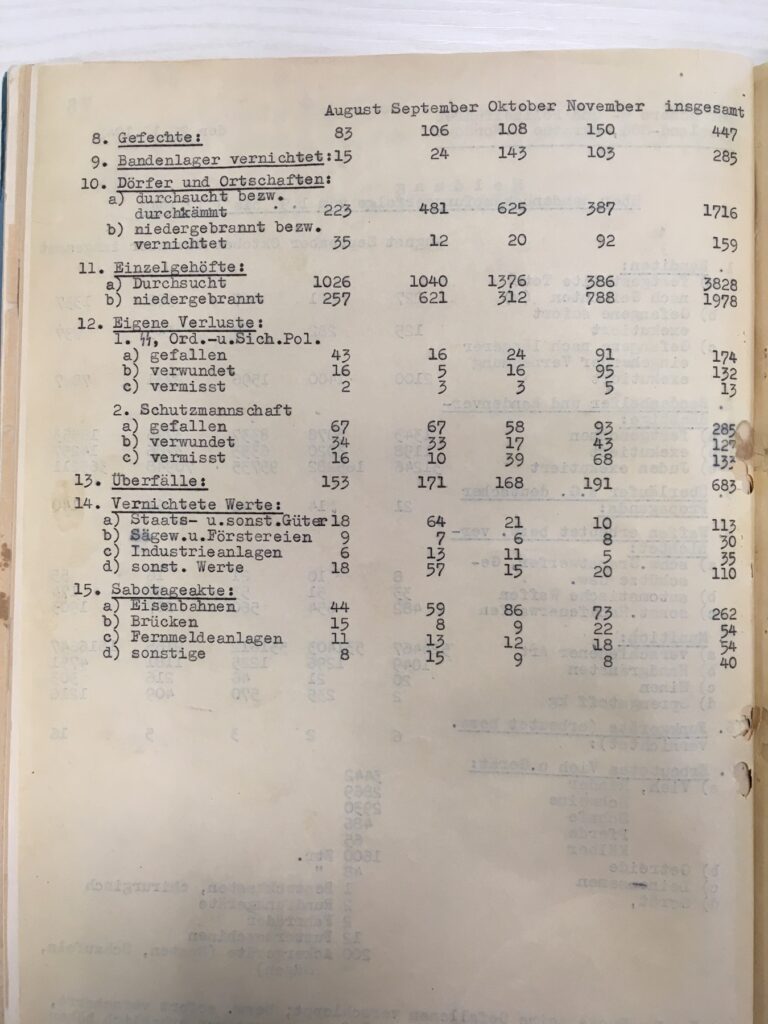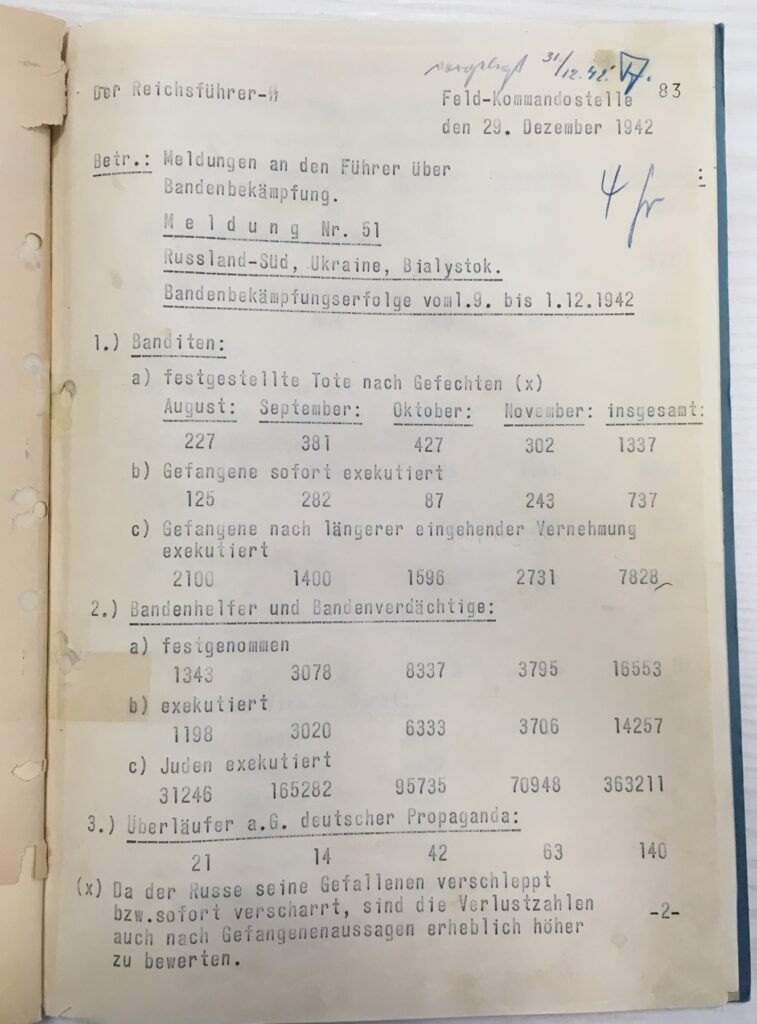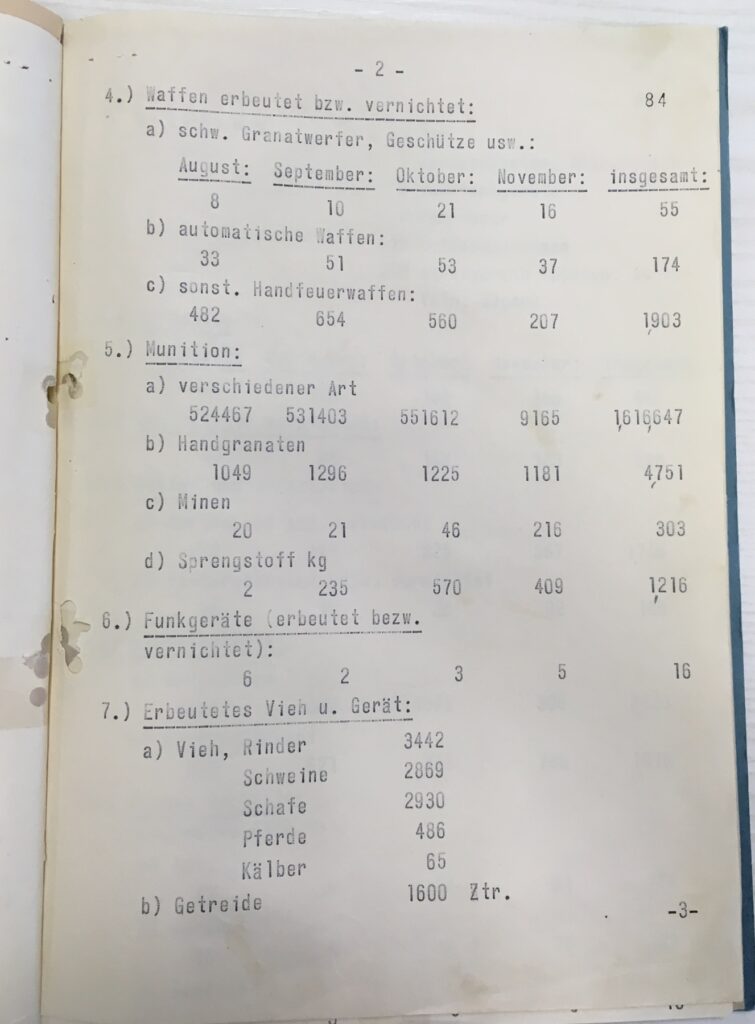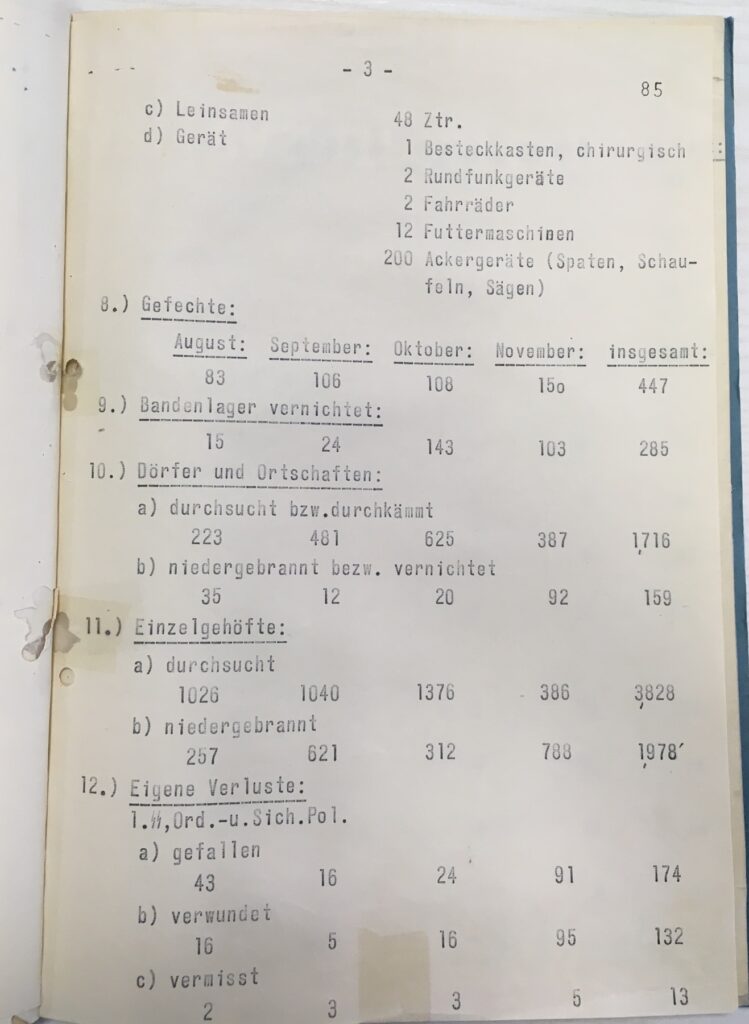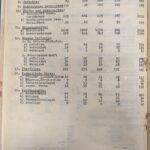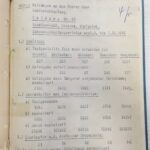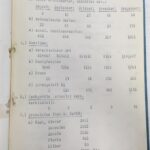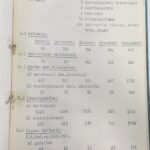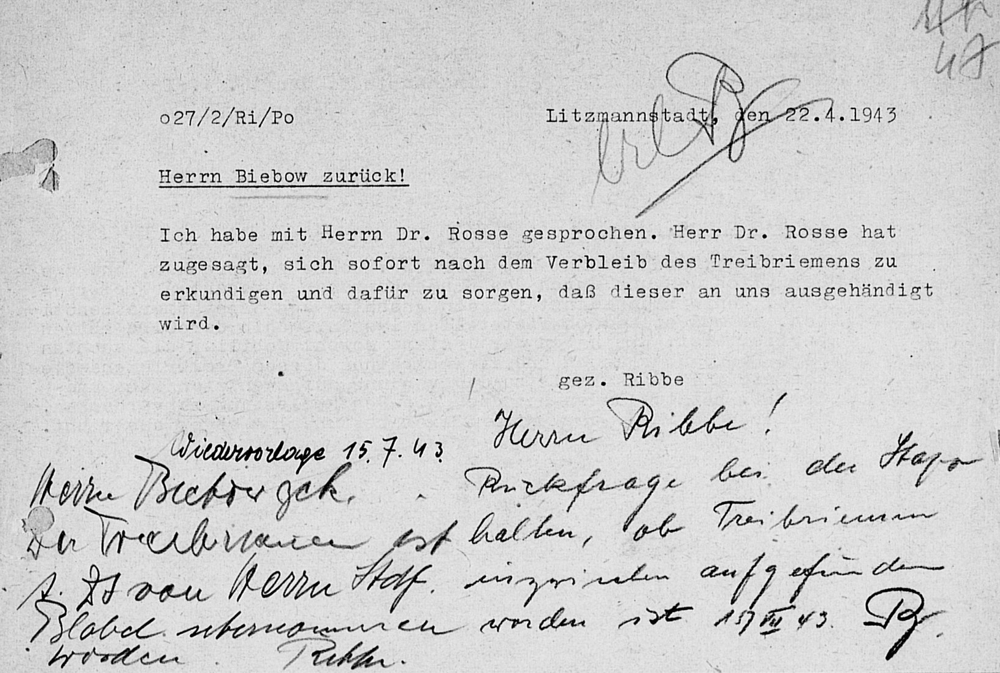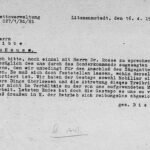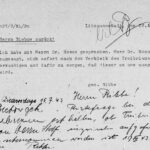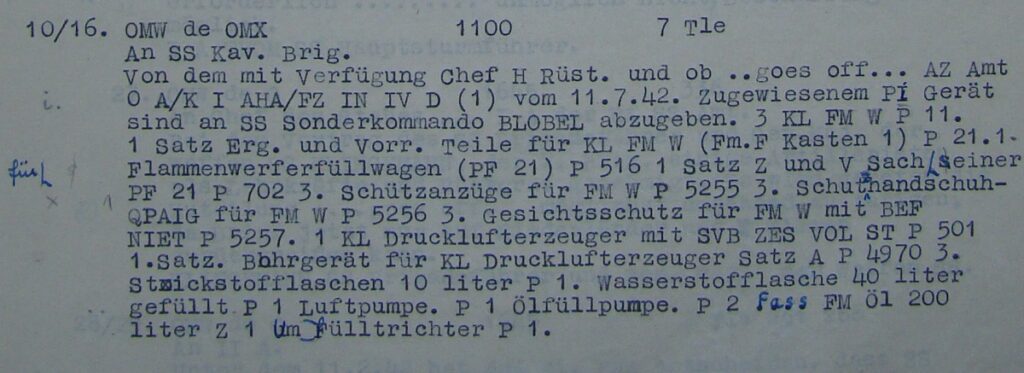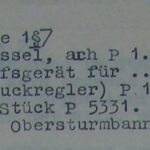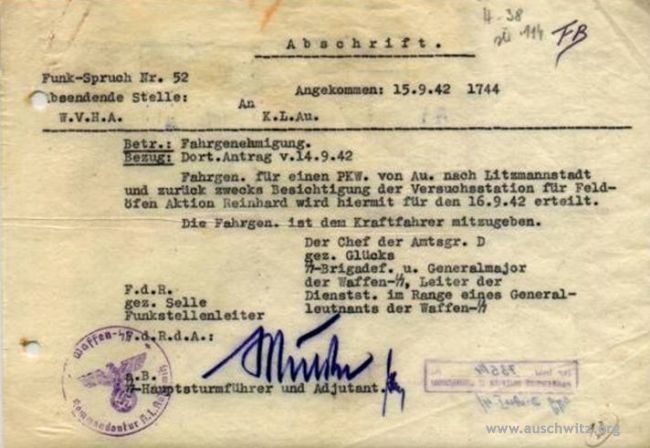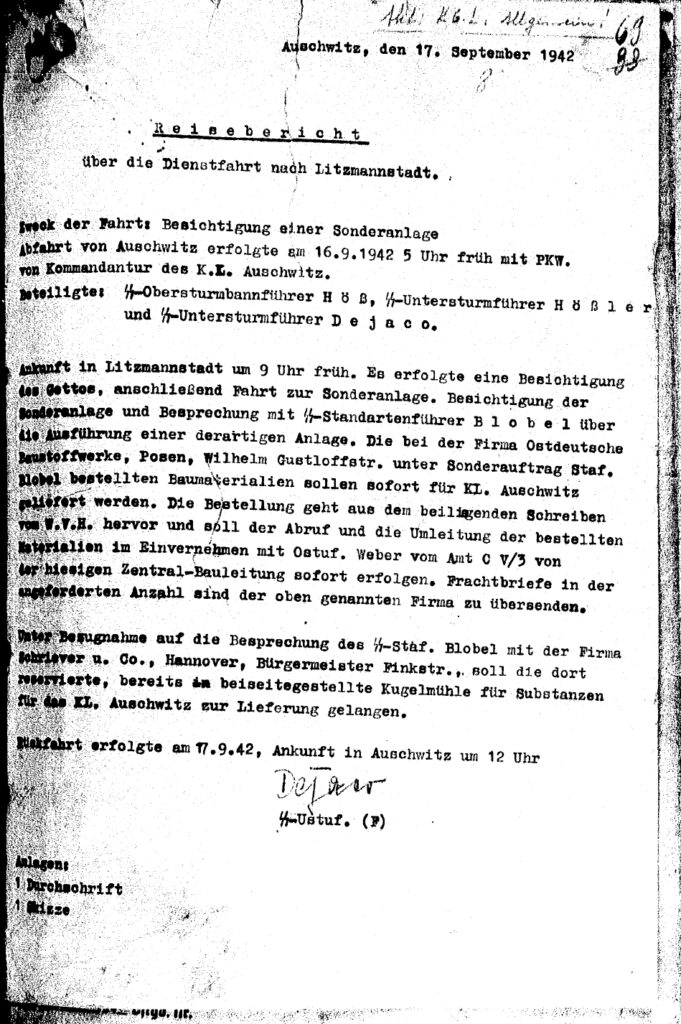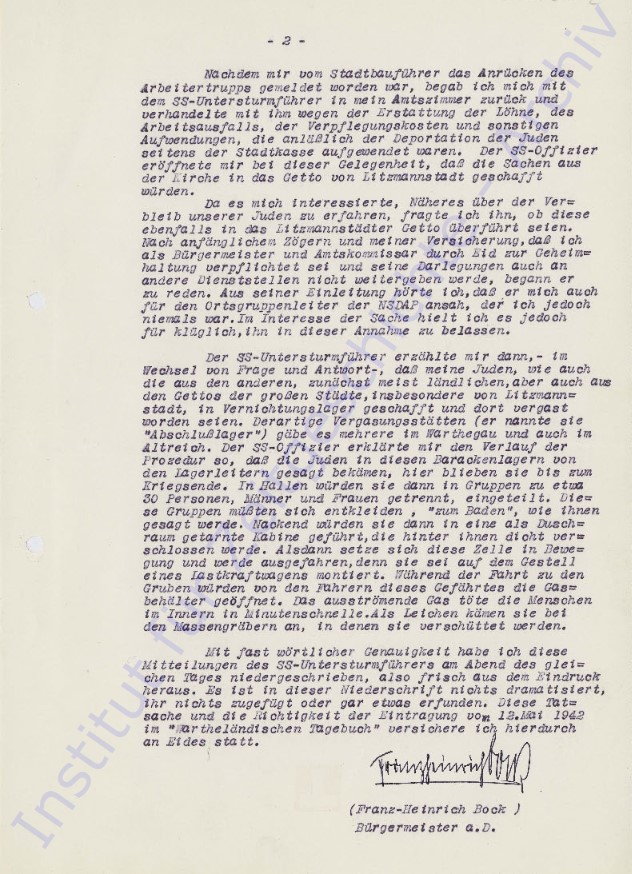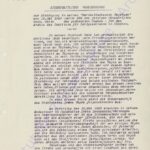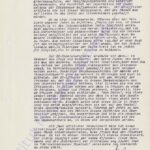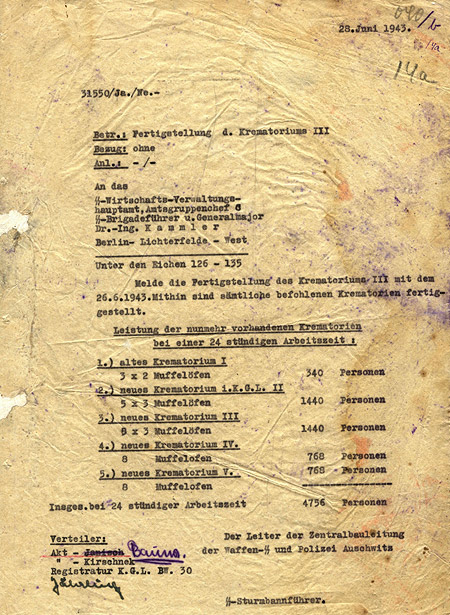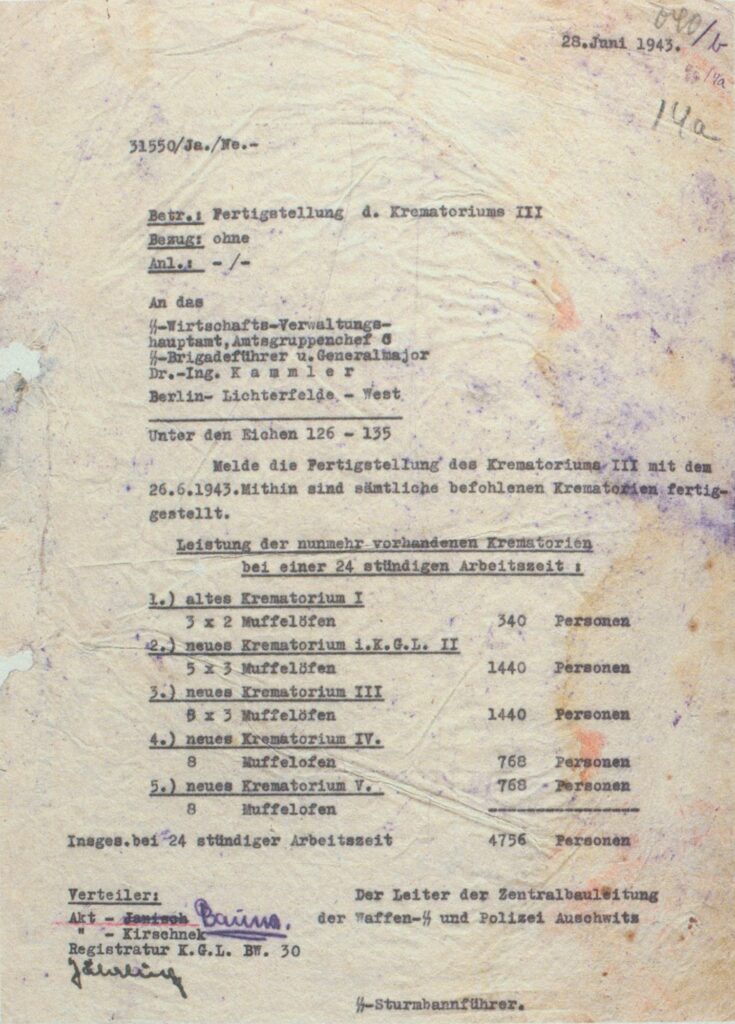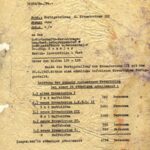Braunschweig, October 15, 1959
Affidavit
for entry in my “Wartheländisches Tagebuch” from May 12, 1942 – page 332 of the current manuscript or page of the printed book – for the archive of the Institute for Contemporary History in Munich.
In my diary, I consistently preferred direct speech. My memory has always been, and still is, despite age-related limitations, quite good. I was able, and still am, to repeat and write down a conversation held at the beginning of the day with a high degree of literalness and accuracy by the end of the day. I wrote in my Wartheländisches Tagebuch with rarely interrupted regularity each evening, recording the day’s experiences and impressions as thoroughly as possible. I was fully aware that I was living and acting in highly dramatic and dangerous times, which could easily end in catastrophe for me, either through an uprising in the Polish territories or through my ever-threatening conscription into the Wehrmacht and the possibility of a “hero’s” death. My children should one day learn from these memoirs about my life, experiences, and attitude towards them. The literal reproduction seemed more vivid and warm-blooded to me than the sober portrayal of the past in the style of official reports.
In precisely this style, the recording of the events of that day appears as follows:
On the morning of May 12, 1942, an SS Untersturmführer from Litzmannstadt appeared in my office in Poddębice, district of Łęczyca/Warthegau, and reported the arrival of a column of trucks that had driven up in front of the Catholic (Polish) church to pick up the belongings left behind by the Jews who had been deported from there a few days earlier. He demanded that I provide a group of Polish workers to carry out the loading. I ordered such workers from the municipal construction crews and went with the SS officer to the Catholic church. His trucks were waiting for him in front of the portals. Together with the Untersturmführer, I entered the church and took stock of the clothing, laundry, and other items that were neatly arranged there and were to be picked up.
After being informed by the city construction foreman of the arrival of the workers, I returned to my office with the SS Untersturmführer and negotiated with him about the reimbursement of wages, lost labor, food costs, and other expenses incurred by the city treasury in connection with the deportation of the Jews. On this occasion, the SS officer informed me that the items from the church would be taken to the ghetto in Litzmannstadt.
As I was interested in learning more about the fate of “our Jews,” I asked him if they had also been taken to the Litzmannstadt ghetto. After initial hesitation and my assurance that, as mayor and official commissioner, I was sworn to secrecy and would not pass on his statements to other offices, he began to speak. From his story, it became clear that he also regarded me as the local group leader of the NSDAP, which I never was. However, in the interest of the matter, I thought it wise to leave him under this impression.
The SS Untersturmführer then told me – in a back-and-forth of questions and answers – that my Jews, like those from other, initially mostly rural areas but also from the ghettos of the large cities, especially Litzmannstadt, were taken to extermination camps and gassed there. Such gas chambers (which he called “final camps”) existed in several places in the Warthegau and also in the Old Reich. The SS officer explained the procedure to me as follows: the Jews were told by the camp leaders in these barracks camps that they would stay there until the end of the war. They were then led into halls in groups of about 30 people, men and women separated. These groups were told to undress “for bathing.” Naked, they were led into a cabin disguised as a shower room, which was tightly sealed behind them. After a short time, this cell was set in motion and pumped out, as it was driven on the frame of a truck. During the drive to the pits, the bodies were ventilated, to remove most of the gas. In these pits, the corpses were buried in mass graves that had already been prepared.
With almost literal accuracy, I wrote down these statements of the SS Untersturmführer on the evening of the same day, fresh from the impression. Nothing in this record is dramatized, nothing added, and certainly nothing invented. I hereby swear that this fact and the accuracy of the entry from May 12, 1942, in the “Wartheländisches Tagebuch” are true under oath.
[signature]
(Franz-Heinrich Bock, former Major)
May 5, 1942 / Tuesday, Poniatowec
The unbelievable has become reality, the inconceivable has become history. My premonitions have been deeply justified. During my vacation, the extermination of the Jews of Poniatowec was carried out. The realistic accounts of the dramatic events only allow the conclusion that these poor people are no longer alive—that they were annihilated.
They have been released. —
But I, and with me my family, thank our Lord from the bottom of our hearts that He spared us from being witnesses to this horrific crime… or even, by virtue of my office, having to carry out the executioner’s duties.
What hellish torment they must have endured in the last days of their lives! How bestially they were treated!
—I am numb from what I have heard, from the eyewitness accounts. It is infinitely difficult for me to put my shock into words; I will try to record what I learned as objectively as possible…
Inspector Netter… reported to me:
[…]
“One day—it was April 14—the Jews were received at the castle estate by a large detachment of gendarmerie. Together with a unit of SS from Litzmannstadt, the unfortunate people were surrounded. They were forcefully escorted into the Polish church.”
“—Into the church?—”
“Yes, into our beautiful city church. They were locked inside. Afterward, the police combed through the ghetto down to the last corner and pulled out anyone who was bedridden or had otherwise been left behind: the elderly, women in childbirth. At the same time, all Jewish workers were taken from their workplaces, including Hermann from your property. They were all shoved into the church, and a dead body was thrown in after them, like a sack.” “Horrible.”
“Yes, that was awful, but it wasn’t the worst. For ten days, the Jews were imprisoned in the house of God. Just as they were, without beds or blankets, without clothes, without spoons or combs, without tools for daily life. Imagine, almost three thousand people of every gender and age, men and women, children and the elderly, the sick and the dead, all in one room. The people couldn’t even lie down at night. The doors were guarded by SS men day and night.”
“And no provisions were brought in?”
“Yes, bread and margarine were provided at the city’s expense. Twice a day, a group of men was allowed to fetch water from the well in front of the church.”
“No sanitary facilities. No toilet, no medical aid.”
“Wasn’t Doctor Körte there?”
“Yes, as a prisoner. He was taken just as he was, during the daily inspection march. Without any medical supplies or instruments. In the end, he couldn’t even help himself. How he lamented, not having even brought a lethal injection for himself.”
“Horrifying! What tragedies must have unfolded in those days inside the church!”
“It is unimaginable for us on the outside. I know that children were born and people died in that agonizing confinement. One day, the SS Hauptsturmführer ordered the Jews, through their elder, to hand over money and valuables to pay for their food. Entire hats full of money, gold, and jewelry were handed over by the desperate people. The city treasury received none of it. The SS confiscated everything. Perhaps that’s for the best, so we wouldn’t be complicit in the robbery.”
“The wailing and lamenting, the cries and screams of the unfortunate Jews could be heard day and night across the entire market. It was ghastly, eerie. The townspeople avoided passing by the church after nightfall. During the day, when the door opened, the prisoners would cry out and beg for mercy, for bandages, for cloth, and—for death. They no longer knew the concept of freedom. Brutally, coldly, heartlessly, the ‘SS heroes’ drove those who spilled out back into the church, where an unbearable stench boiled.”
“This purgatory lasted nine days and eight nights. On the tenth day, early in the morning, the SS drove a convoy of trucks into the market. The church door was thrown open, and the Jews were let out in groups.”
“How those unfortunate people looked! Disheveled, ragged, filthy, nearly starved, they resembled eerie ghostly figures more than living humans. They had hardly slept the entire time, only able to sit. They couldn’t undress, couldn’t wash, couldn’t satisfy their hunger. The bread and margarine they were given barely kept them from starving. In this state, they were herded onto the trucks like cattle. They dragged and pushed each other, as the SS men forced them to move with blows, demanding the utmost speed. On the trucks, the people were packed tightly together, standing of course. The sick were mixed in among them, unable to stand on their feet. The others had to climb over them without mercy, eventually stepping on them. Blood-curdling screams pierced through the wailing and lamenting. The trampled sick were pulled up. ‘They’ve been trampled to death,’ I heard someone say. The dead were crammed in with the living. Like sardines. When the tarpaulins bulged outward because of the overcrowding, the SS men beat the bulges—these bulges that were people—with clubs and rifle butts. I wanted to run away, but I couldn’t.”
“—And the women?”
“They were treated no differently. Heart-wrenching scenes unfolded. The tortured people screamed, wept, and fell into convulsions. Despite the danger, women with small children threw themselves at the SS men’s feet, clutching their knees, begging for mercy. They were beaten and shoved onto the trucks, bloody and battered. Then the convoy, loaded with its cargo of death, departed for the first time, with SS motorcyclists flanking it and following behind.”
“Cargo of death?—”
“Yes. I firmly believe they were taken to a death camp.”
“Did anyone tell them that?”
“Not directly. The destination of the journey was kept secret. The transport headed toward Dabie. There are rumors that near this town, in a village called Chelmno, there are facilities for gas poisoning, and they are operating at full capacity.”
“What did the SS say?”
“They used the excuse that the Jews were only being taken to another camp. But, from what I witnessed, you don’t treat people like that if they’re just being relocated. You only treat people like that when they are marked for death.”
“I never believed the circulating rumors of extermination measures and gas chambers. That would be state-organized mass murder!”
“Neither did I, Mr. Mayor. But now I not only believe it, I am convinced of it.”
[…]1
By the way, there were no valuables left in the church. Before the transport, the SS took all the money, valuables, and jewelry from the Jews. A staggering amount was collected. Together with Mr. Helferich and Mr. Runge, I carried the gold and diamonds into my office.
We had never seen so many glittering things and riches in one place before. I was just about to write up a report and an inventory, in the presence of witnesses, when three SS men walked in… [and told me I didn’t need to register the items], they would take care of it in Litzmannstadt. With a casual sweep of his arm, one SS man shoved the entire pile of sparkling things—unbelievable wealth—from my desk into his briefcase, as if it were a pile of limestone samples. I was speechless! But I couldn’t do anything about it.—After the men left with the briefcase full of jewels, the three of us discussed the opportunities now available to these SS men. How much might these government representatives ‘lose’ along the way? The stockpile is completely untraceable. They could just reach into that briefcase, take out a few items, and pocket them—no one would ever know. That scoundrel would be set for life. And we know all too well what kind of ‘honorable men’ they are.”
“Oh, my poor homeland!”
[…]
May 12, 1942 / Tuesday
Once again, a column of SS trucks arrived in our town. Right in front of the church portal. The command leader reported to me. He has the order to transfer the clothing, shoes, and laundry of the Jews, stacked in the church, to Litzmannstadt.
Together with him, I entered the church to personally assess its condition. The first thing that struck me was that there were no pews left in the nave. All the religious items had disappeared from the altars, the windows were smashed, the carpets and floor showed large burn marks, and the pillars stood blackened and soot-covered. Little now reminded me that this vast hall had once been a place of worship for devout people.
Now, nearly five meters high, enormous amounts of old clothes were stacked inside. Coats here, jackets and pants there, across the way women’s dresses of all kinds, piles of laundry, shoes and boots of all sizes. The inventory was precisely sorted and filled the entire nave. Everything had been done thoroughly. Despite the height of the enormous space and the broken windows, a foul stench still lingered in the church. A mixture of sweat, garlic, camphor, dust, and excrement. How terrible it must have been when so many poor people suffered through the last days of their lives here.
We turned back, the SS officer and I, and went to the town hall. Meanwhile, a group of Polish workers had been pulled from a construction site and made available to the SS to carry out the loading work.
“Who is going to compensate the town for the wages, the lost work, the food costs, and other expenses that have been necessary due to the deportation of the Jews?” I asked the SS-Untersturmführer.
“If you really want to be compensated for the costs, then you’ll have to turn to the ghetto administration in Litzmannstadt. Submit your invoices there, and they will pay them. However, we were under the impression that you would be happy to bear the costs yourself, considering that you’ve now gotten rid of your Jews.”
“I have no intention of waiving the reimbursement. The Jews brought money into the city coffers through their labor but cost us nothing.”
“They’re not public property, after all. I assume they’re needed to equip the Jews in your ghetto.”
“We’ll throw them the bad shoes, but not the good ones. And they won’t need clothes anymore, anyway.”
“Didn’t our Jews go to Litzmannstadt?”
Did he realize I was fishing for information? He looked at me intently and remained silent. I had to nudge him: “I wasn’t here at the time of the deportation. I only returned five days ago from the Old Reich, where I spent my vacation. So I’m not well informed.” After further cautious hesitation, which I ended by offering him a cigar, he apparently deemed me trustworthy enough. Once he lit it, he began with his horrifying revelations:
“No. The Jews didn’t go to Litzmannstadt. We wouldn’t dare send any more there. We’re glad to be gradually getting rid of them from there.”
“But where did they end up?”
“In the afterlife, if such a thing exists for them.”
“What? They’re… dead?”
The young SS officer put on an arrogant expression, sat up straight, and raised his eyebrows.
“Honestly, Mr. Mayor, do you really not know what’s going on?”
“Officially, no. I’ve heard speculations from all sides. People even talked about extermination camps. But no one has ever seen them. No one knows where our Jews have actually gone.”
“That’s correct, and it’s intentional. It’s enough for only a few leading figures to know. Well, as mayor, district commissioner, and local group leader, I can inform you. You’re bound by your position and your oath to keep silent.”
(The forthcoming revelations were so important to me that I gladly let the SS man mistakenly believe that I also held the position of the local group leader of the Party.)
“Did you oversee the deportation of the Jews in April?”
“For other towns, yes, but not from Poniatowec. This is my first time here.” (So, he didn’t know me.)
“I will, of course, keep your information confidential. Please continue.”
“All the Jews have gone the same way, and they will continue to do so. First, we freed the countryside, the small towns, from these parasites, and now we’re gradually clearing out the large ghettos. The day when Europe is free of Jews can be calculated based on the capacity of the gas institutes.”
“Gas institutes?”
“Yes. We now have several of them in the Old Reich and the Warthegau.”
“The Jews are led into gas chambers?”
“No, it’s not that primitive. Imagine it like this: from here, the Jews are transported directly to the final camp. You don’t see gasometers or chimneys there. It looks like a neat, particularly spacious barracks camp. The Jews are unloaded there. The camp leader welcomes them and tells them that they will settle in this camp until the end of the war. Then, they are led into clean halls and first given food. After that, they are divided into groups of about 30 people, separated by men and women. Once that’s done, they are called group by group for a ‘bath’. The group first enters a changing room. Naked, they walk through a sort of temperature lock, up a few stairs, into the ‘shower room’. It’s windowless and can just about hold 30 people. Showerheads hang from the ceiling, and there are drains in the floor. In every way, it looks exactly like a normal shower room.
As soon as the group enters, the door is sealed tightly from the outside, and the ‘shower room’ drives off. It’s actually a specially constructed truck. Once the truck is in motion, the transport leader operates two or three levers, and a particularly lethal gas from an internal large tank floods into the airtight space. It kills the people inside within minutes, quickly and painlessly. The walls are soundproof. No noise can be heard outside. Everything happens quietly and peacefully.”
“Well, thank you!”
“Oh, there are far more painful and significantly more agonizing ways to die.”
“Perhaps. But go on.”
“There’s not much more to say. The drive is short. Within fifteen minutes, the burial site—usually a deep sand or clay pit—is reached. Valves are opened, compressed air is blown into the ‘shower room’, expelling even the last traces of the gas. Then the door is unlocked, and the burial crew pulls out the bodies. They slide down a chute, are laid side by side like herring, and covered with lime. Then a layer of earth is added—and the next transport can come.”
I struggled hard to keep my deep emotion, my disgust, from bursting out, to suppress every reaction before it became noticeable. I avoided the storyteller’s expectant gaze by asking more questions.
“Is the burial crew made up of Poles? Certainly not Germans.”
“For heaven’s sake! What are you thinking? Of course not. They’re Jews. They live in the hope that by doing such gravedigger work, they might buy their own lives. But eventually, they too are dealt with, in another camp, in another way. We wouldn’t dream of nurturing accomplices and traitors for long. Meanwhile, the clothes in the camp are being searched.”
“What do you mean by that?”
“Thoroughly checked for valuables.”
“Is that still worth it?”
“What do you think! These people carry everything of highest value between their shirt and skin! Come to the ghetto administration in Litzmannstadt sometime. You’ll see treasures like you’ve never seen before and never will again. Worth billions! After the search, the clothes go to textile recycling. Meanwhile, a new gas truck has arrived, and the next group enters the ‘shower room.’ Of course, the trucks are carefully cleaned after each trip, and the gas and compressed air tanks are refilled. Nothing reveals these death carts. They are driven up to special ramps that make it look as though they are just another room connected to the barracks. This goes on day after day in continuous operation. It clears out a lot, but the ghettos in Litzmannstadt and Warsaw are so large that there’s still work for years to come.”
This is what this slim, handsome young man tells me, smoking a cigar, in a casual tone, as if he were describing the operations of a sugar factory.
Have these people who call themselves “the Führer’s elite” completely lost all heart and soul? Are they so poisoned by propaganda, so blindly obedient, or so honestly convinced that they see Jews not as human beings but as harmful animals in human form that must be coldly exterminated like rats?
Our Jews were surely not welcomed at the “final camp” with a heartfelt speech or a feast. They were likely ordered straight to “bathe.” They surely knew what the well-disguised “shower rooms” meant as they were herded inside.
Mrs. Goldeborn’s last visit on the evening of Easter, her heartbreaking farewell, will remain before our eyes for the rest of our lives… And how much did our faithful house servant Hermann sense the poisonous, imminent danger that threatened him and those like him. How fearful, how sad he was when we said goodbye. He, too, knew that it was a final farewell.
So, this is how your journey on earth has ended. In a deep clay pit beneath a layer of lime. But your greatest wish was fulfilled: you did not need to be separated. United, you have passed into the mysterious eternity. We, my family and I, will remember you with righteous honor. — Memento mori. —
May 13, 1942 / Wednesday
Today I traveled to Litzmannstadt. Equipped with a rather significant invoice, I reported to the massive building of the ghetto administration. From here, all the Jews of the Wartheland are “cared for.” We’ve seen with our own eyes and heard with our own ears what kind of “care” this is.
Citing yesterday’s transport of goods and its commander, I was immediately brought to the leading men. These were officers of an SS special unit whose specific task was the management of this vast ghetto. After discussing and approving my cost breakdown, I took the commander at his word from yesterday and asked him to show me the treasures he had hinted at.
When I think back to that walk through the many rooms of the large building, my brain reels. In each room, there were different things to see. Things to which women’s hearts and minds cling with longing, yet which leave me cold… Such glittering objects are foreign to me. The SS men, who showed me many trays filled to the brim with sparkling jewelry of silver, gold, and platinum from large safes, surely didn’t understand my indifference to them. If you consider that such glittering items are worth thousands of marks, then this collection represents millions—if not billions.
“What happens to all this wealth?” I asked.
“Most of it goes abroad. It brings us valuable foreign currency. A smaller portion is supplied to the domestic watch and jewelry trade.”
“On whose account?”
“On the Reich’s account. These items are classified as spoils of war. Their trade value is credited to the state of Poland as war reparations.”
I was then shown the watchmaking workshop. Here, about twenty watchmakers were repairing and cleaning the “seized” watches… Then I was allowed to see the finished watch storage. On velvet trays, neatly organized and labeled with price tags, lay solid gold pocket watches, alongside normal and abstract examples of ladies’ wristwatches in an overwhelming variety of sizes, designs, and features. I saw watches surrounded by a whole wreath of diamonds and other precious gems.
In the next hall, men in white coats sat at windowed tables, additionally illuminated by cold blue neon light. They weighed loose diamonds, sapphires, emeralds, rubies, and the like. They washed them in sharply smelling liquids, examined them with magnifying glasses, determined their carat value, and thus their worth. The trays sparkled and glimmered in all the colors of the rainbow.
I could only express a dull astonishment at the fantastic sums they mentioned. The sight of these precious excesses pained me deeply. I saw the blood on them, the tears, the excruciating pain, the endless suffering, and the bitter death agony of their former owners. I never want to possess such a stone, such a piece of jewelry, ring, or watch. It would destroy my inner peace.
They showed me whole baskets full of rings, from simple wedding bands to dazzling combinations of diamonds. Masterpieces of the highest artistic and material value. Even a single piece represents a fortune I could never honestly save in my entire life. And yet I have no desire for them. Not in the least.
What shook me most was the inspection of the extensive cellar vaults. They were divided by wire mesh into rooms of about 10 square meters each, approximately 4 meters high. These sections were stuffed to the ceiling with intricately forged and hammered candlesticks of silver and gold, with precious objects and works of art that clearly had a sacred purpose. These treasures came from synagogues and lodges.
In the public conscience and by criminal law, this is called church robbery.
No. No blessing can come to our Fatherland from this. During the inspection, a physical oppression settled on my chest. It only lifted when I had left this house of horrors.
The road to Poniatowec inevitably led right through the vast ghetto of Litzmannstadt, which occupies an entire district. The street is flanked for kilometers by barbed wire fences. In front of each of the few gates, two fully armed SS men stand guard. Additionally, there are posts along the fence, each within sight of the next. Two or three bridges, raised high above the road, allow the Jews to move from one block to another. These bridges are not only fenced on the sides but also covered with barbed wire to prevent any of the inmates from considering suicide by jumping. Such a death would be undesirable to those in power. But it’s not necessary anyway. They’re all doomed to die.
“We’re letting the ghetto slowly run out.” This horrifying phrase from the SS-Untersturmführer echoes in my mind as I pass through and recognize the pitiful figures in the ghetto streets. They scurry about like dark shadows. Old men, women, children. Often, it’s hard to distinguish the sexes under their ragged coverings. They use up everything they have—every blanket, every scrap of fabric—because no new clothing is provided. Not even the clothes taken from their fellow believers who preceded them in death.
The impression of this ghetto is horrifying. The street bridges look like rat traps. No creature could escape here, except for the final journey out.
“The day when Europe is free of Jews can be calculated based on the capacity of the gas institutes.”
Lord, have mercy!
May 15, 1942 / Friday
The ghetto administration of Litzmannstadt has made the household belongings of the exterminated Jews available to us. What generosity, to be given authority over things that, by law, don’t belong to us at all!
